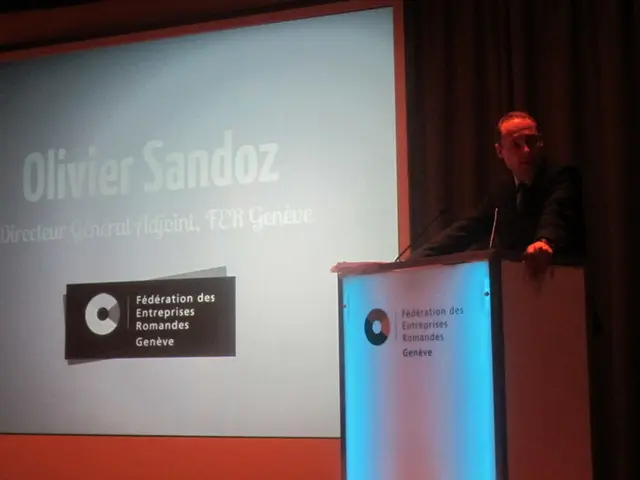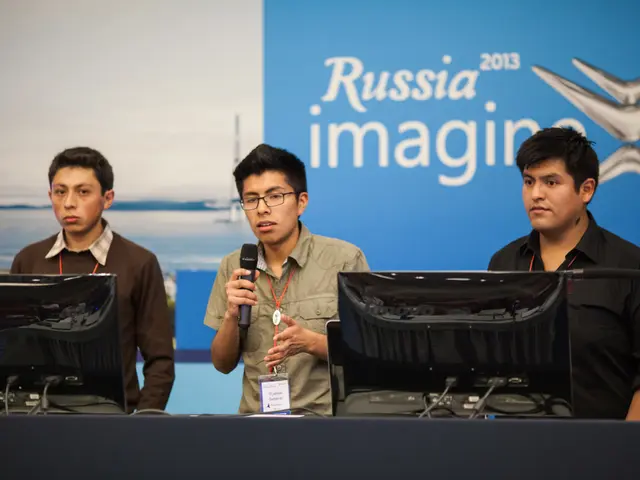Country'sSelf-Sufficiency in Energy at Risk Without Domestic Technological Developments, Potentially Making It Dependent on Foreign Technology
Ekibastuz GRES-3 Power Plant Tender Under Scrutiny
The Ministry of Energy in Kazakhstan has announced a tender for the construction of the Ekibastuz GRES-3 power plant, with an estimated cost exceeding 3 trillion tenge. The National Chamber of Entrepreneurs, "Atameken," has inspected the tender documentation and the preliminary FEED of the project, offering comments and proposals to the Ministry of Energy.
A key concern surrounds the indicated available capacity of the power plant. While the documentation lists both installed and available capacities as 2640 MW, experts argue this figure is technically incorrect. The installed capacity represents the maximum generation capacity, disregarding real losses and limitations, while the available capacity signifies the power that can be delivered to the grid after meeting the station's internal needs.
A power station's own needs include expenses for water pumps, boiler air fans, fuel conveyors, automation systems, internal lighting, heating, and other essential internal equipment. For large coal-fired power plants with supercritical parameters, own needs generally amount to between 5 and 8% of the installed capacity. Therefore, a 2640 MW station should realistically deliver 120-210 MW less to the grid. This would lower the available capacity to approximately 2430-2500 MW.
Errors in calculations could result in the power system receiving less capacity than projected, affecting the balance between demand and supply in the country. The available capacity is crucial for tariff calculation and investment returns. Neglecting internal power consumption in calculations may lead to an incorrect assessment of project profitability and unjustified tariff increases for consumers.
Regarding the project's cost, "Atameken" has questioned the sum of 3 trillion tenge, expressing concerns about potential inflated spending. The construction of a full-cycle greenfield power plant includes land management, building structures and facilities, procuring main equipment, water supply and wastewater systems, engineering networks, power networks, ash and slag disposal, emission control systems, administrative buildings, staff infrastructure, logistics, and temporary structures during construction.
However, the existing Ekibastuz GRES-3 plot, cooling lake, ash dumps with increased capacity, operational railway access, high-voltage grid connection, water treatment systems, chemical wastewater treatment, road, and engineering infrastructure could contribute to cost reductions. In global practice, having ready infrastructure typically leads to projects costing at least 15-20% less than constructing on a clean site. Based on this factor, the estimated cost for the Ekibastuz GRES-3 power plant should be revised downward.
Localization and preferences are essential aspects lacking in the EGRES-3 project. Localization refers to the process of using domestic goods, works, and services for a project. This can encompass manufacturing equipment, construction work, maintenance services, staff training, and more. Preferences are special conditions or advantages given to tender participants to encourage the use of Kazakhstani goods, works, and services.
Implementing localization and preferences is vital for stimulating the development of the national industry and engineering competencies, creating jobs, retaining taxes and profits within the country, and establishing a basis for future exports. Failure to localize may result in financial loss, a lack of development for domestic companies, increased dependence on foreign suppliers, technology leakage, limited export potential, and an inability to develop a competitive national industry.
Examples of projects that have benefited from localization include the establishment of Talgo's passenger train assembly plant in Astana, which facilitated technology transfer and increased the share of local components, and Asia Trafo's high-voltage transformer plant in Shymkent. Localization has also created thousands of jobs and led to the formation of new industries in the oil service sector.
In conclusion, implementing localization in the Ekibastuz GRES-3 project is crucial for Kazakhstan's economic growth and the development of its industry. Failing to do so could result in an overpriced power plant, rising tariffs, weakened industry, and loss of public trust. Acknowledging the need for refined technical requirements, updated estimates, localization, and a transparent investment return scheme is essential for the successful execution of strategic projects like the Ekibastuz GRES-3 power plant.
- The industry and engineering competencies of Kazakhstan could be developed by implementing localization in the Ekibastuz GRES-3 project, which includes the use of domestic goods, works, and services.
- Technology leakage, limited export potential, and an inability to develop a competitive national industry may occur if localization is not implemented in the Ekibastuz GRES-3 project.
- The construction cost of the Ekibastuz GRES-3 power plant could be reduced by taking advantage of the existing infrastructure on the site, which includes the cooling lake, ash dumps, operational railway access, high-voltage grid connection, and engineering infrastructure. This could result in savings of at least 15-20% compared to constructing on a clean site.




